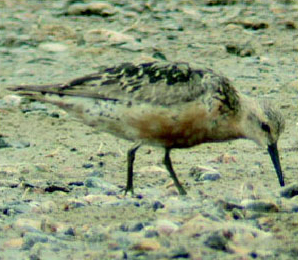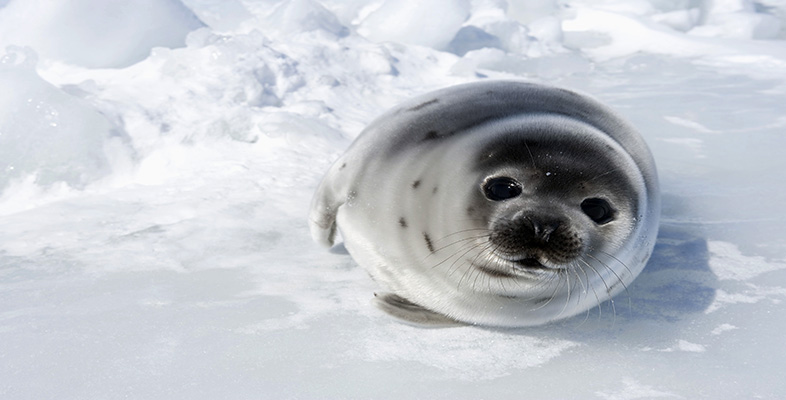2.2 Migration for breeding
Birds do not hibernate, but like reindeer, many species undergo daily or seasonal changes in energy expenditure and appetite, and many of the endocrine changes that are an integral part of true hibernation in other groups. The fact that the preliminary stages of hibernation are widespread among vertebrates may help to explain why true hibernation has evolved several times in distantly related taxa. Instead of hibernating, some species of birds migrate to and from breeding areas, where they are able to exploit transient gluts of vegetation or, more often, of the insects and other arthropods that feed on them. Long-distance migratory birds belong a wide variety of taxa, including cranes (order Gruiformes), swifts (order Apodiformes), some swans, ducks and geese (order Anseriformes), cuckoos (order Cuculiformes) and many different kinds of passeriform birds including swallows and martins (family Hirundinidae).
Some birds travel to the Arctic to breed during the polar summer, which can be both cool and short at very high latitudes (e.g. Svalbard), or in regions such as Siberia that have particularly severe climates. It’s worth mentioning in passing that until these remote regions were explored in the 18th and 19th centuries, the breeding sites of many migratory birds were a complete mystery, giving rise to wild speculations about where, if at all, the birds bred. For example, barnacle geese (Branta leucopsis) derive their name from the medieval belief that they arose spontaneously from barnacles. In fact, they breed in Greenland, Svalbard, remote parts of Sweden and northern Russia, with almost all the Svalbard population spending the winter around the Solway Firth and Dumfries and Galloway, Scotland. Red knots (Calidris canutus, order Charadriiformes) are ‘waders’, eating worms, shellfish and other invertebrates collected from beaches, mudflats and estuaries. These small birds (adult body mass about 0.1 kg) form large, dense flocks near sandy or muddy coasts of northern Britain and northwest Europe during the winter (Figure 7). Like many birds, the juveniles eat insects and other small arthropods. Some populations breed between June and August on the Taimyr Peninsula, the most northerly region of Siberia that extends into the Arctic Ocean. The area became free from permanent ice following the end of the last ice age only a few thousand years ago, and is flat and marshy, with several large slow-flowing rivers that support huge populations of mosquitoes and other insects in summer.

SAQ 4
What would be (a) the advantages and (b) the disadvantages of breeding in such places?
Answer
(a) Advantages: fewer predators (though arctic foxes, snowy owls and large gulls such as skuas are present); foods suitable for the chicks and adults are available in large quantities in adjacent habitats; continuous daylight (Figure 1) permits continuous foraging. (b) Disadvantages: the weather is often cold and stormy, and the terrain offers little shelter, so keeping the eggs and chicks warm may pose problems. The breeding season is very short, necessitating rapid growth of the chicks. The journey between Siberia and northwest Europe is tens of thousands of kilometres.
Dutch ornithologists used doubly-labelled water and other techniques to study the growth and metabolism of chicks there, and compared their data to similar observations on other species of the order Charadriiformes with similar habits (sandpipers, dunlins, turnstones, godwits, plovers and oystercatchers) that breed in the temperate climates of northwest Europe (Schekkerman et al., 2003). They found that chicks of the arctic-breeding species both grew faster and generated more body heat, mainly by shivering, than similar birds breeding in temperate climates. The increased thermogenesis was necessary not only because of the severe climate, but also because in Siberia, the parents actually spent less time brooding even very young hatchlings. Red knot chicks are precocious and can forage for themselves at a few days old. They apparently also manage with very little sleep (in sharp contrast to most neonatal birds and mammals, which require many hours of sleep), enabling them and their parents to forage for up to 20 h per day. The total energy expenditure from hatching to fledging was found to be up to 89% higher in the arctic-breeding knots, but the chicks were dependent on the parents for only 17–20 days, a shorter period than related species of similar size.
This study demonstrates a range of far-reaching adaptations of thermoregulation, growth rate and sleep requirements in birds that breed in polar regions. The opportunity to exploit the temporary abundance of food apparently outweighs any disadvantages associated with these adaptations of growth rate and thermogenesis and the energetic costs of migration.
The journey itself requires further metabolic specialization. The birds break their journey at several places where food is abundant and easily obtained. However, since time is short, some stopovers last as little as 1–4 days, during which time they must take on enough fuel for the next stage of the journey. The closely related sandpiper (Calidris mauri) that also breeds in the Arctic can fatten at 0.4 g day−1 (4.5 times the normal rate) during brief stopovers. This remarkably high rate of deposition of fat stores is possible due to a temporary increase in the activity of lipogenic enzymes such as fatty acid synthase.
